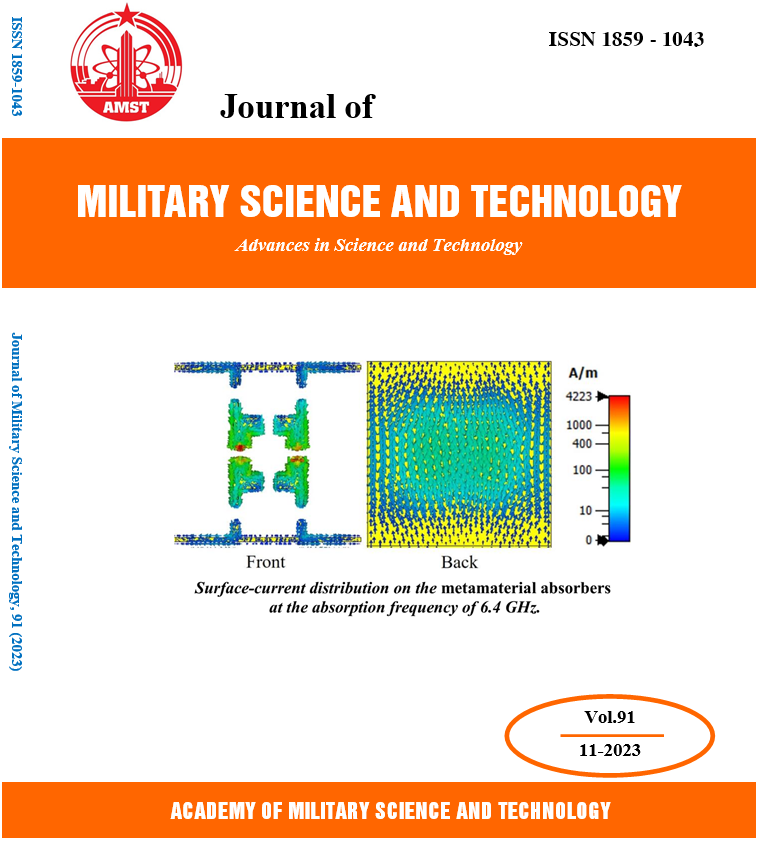A novel coherence optimization algorithm for forest height inversion using single-baseline PolInSAR images
422 viewsDOI:
https://doi.org/10.54939/1859-1043.j.mst.91.2023.1-10Keywords:
Polarimetric Interferometry Synthetic Aperture Radar (PolInSAR); Forest height; Ground phase.Abstract
Forest height is one of the influential information for the management of forest cover and is also one of the criteria to evaluate the growth of organisms in the forest ecosystem. This paper suggests a novel coherence optimization algorithm to increase the accuracy of forest height estimation using the L-band PolInSAR images. First, the ground phase and coherence line are determined based on the mean of the coherence set. Then, the proposed algorithm is developed by adding more forced conditions to determine the volume-only coefficient coherence optimization. Finally, the forest height and extinction coefficient can be extracted by comparing the volume-only optimal coherence coefficient with the values in the look-up table. The effectiveness of the proposed method was evaluated with PolInSAR simulated and spaceborne data. Experimental results show that the proposed method has improved the accuracy of estimated forest height by more than 0.9m compared with the forest height retrieval algorithm by Tayebe.
References
[1]. T. Mette, K. P. Papathanassiou, I. Hajnsek, H. Pretzsch and P. Biber, “Applying a common allometric equation to convert forest height from Pol-InSAR data to forest biomass”, Proceeding of IEEE International Geoscience and Remote Sensing Symposium (IGRASS 2004), Anchogare, AK, USA. pp.272-276, (2004).
[2]. M. Neumanm, L. F. Famil and A. Reigber, “Estimation of forest structure, ground and canopy layer characteristics from multi-baseline polarimetric interferometric SAR data”, IEEE Transactions on Geoscience and Remote Sensing, 48(3), pp. 1086-1103, (2010). DOI: https://doi.org/10.1109/TGRS.2009.2031101
[3]. P. Varvia, T. Lahivaara, M. Maltamo, P. Packalen and A. Seppanen, “Gaussian Process Regression for Forest Attribute Estimation from Airborne Laser Scanning Data”, IEEE Transactions on Geoscience and Remote Sensing, 57(6), pp. 3361-3369, (2019). DOI: https://doi.org/10.1109/TGRS.2018.2883495
[4]. S. R. Cloude and K. P. Papathanassiou, “Three-stage inversion process for polarimetric SAR interferometry”, IEE Proceedings - Radar, Sonar and Navigation, 150(3), pp. 125-134, (2003). DOI: https://doi.org/10.1049/ip-rsn:20030449
[5]. T. Flynn, M. Tabb, and R. Carande, “Coherence region shape extraction for vegetation parameter estimation in polarimetric SAR interferometry”, In Proceedings of the International Geoscience Remote Sensing Symposium (IGARSS), Toronto, Canada, 5, pp. 2596–2598, (2002).
[6]. F. Wenxue, G. Huadong, L. Xinwu, T. Bangsen and S. Zhongchang, “Extended three-stage polarimetric SAR interferometry algorithm by dual-polarization data”, IEEE Transactions on Geoscience and Remote Sensing, 54(5), pp. 1 - 17, (2016). DOI: https://doi.org/10.1109/TGRS.2015.2505707
[7]. M. Tayebe, Y. Maghsoudi and A. Meisam, “Forest Height Retrieval Based on the Dual PolInSAR Images”, IEEE Transactions on Geoscience and Remote Sensing, 14(2), pp.1214-1218, (2022). DOI: https://doi.org/10.3390/rs14184503
[8]. F. Garestier and T. L. Toan, “Forest Modeling for Height Inversion Using Single-Baseline InSAR/PolInSAR Data”, IEEE Transactions on Geoscience and Remote Sensing, 48(3), pp.1528-1539, (2010). DOI: https://doi.org/10.1109/TGRS.2009.2032538
[9]. T. Flynn, M. Tabb, and R. Carande, “Coherence region shape extraction for vegetation parameter estimation in polarimetric SAR interferometry”, In Proceedings of the International Geoscience Remote Sensing Symposium (IGARSS), Toronto, Canada, 5, pp. 2596–2598, (2002).
[10]. M. L. Williams, “PolSARproSim: A coherent, Polarimetric SAR simulation of Forest for PolSARProSim”, http// earth.eo.esa.int/ polsarpro/ SimulatedDataSources.html, (2006).







